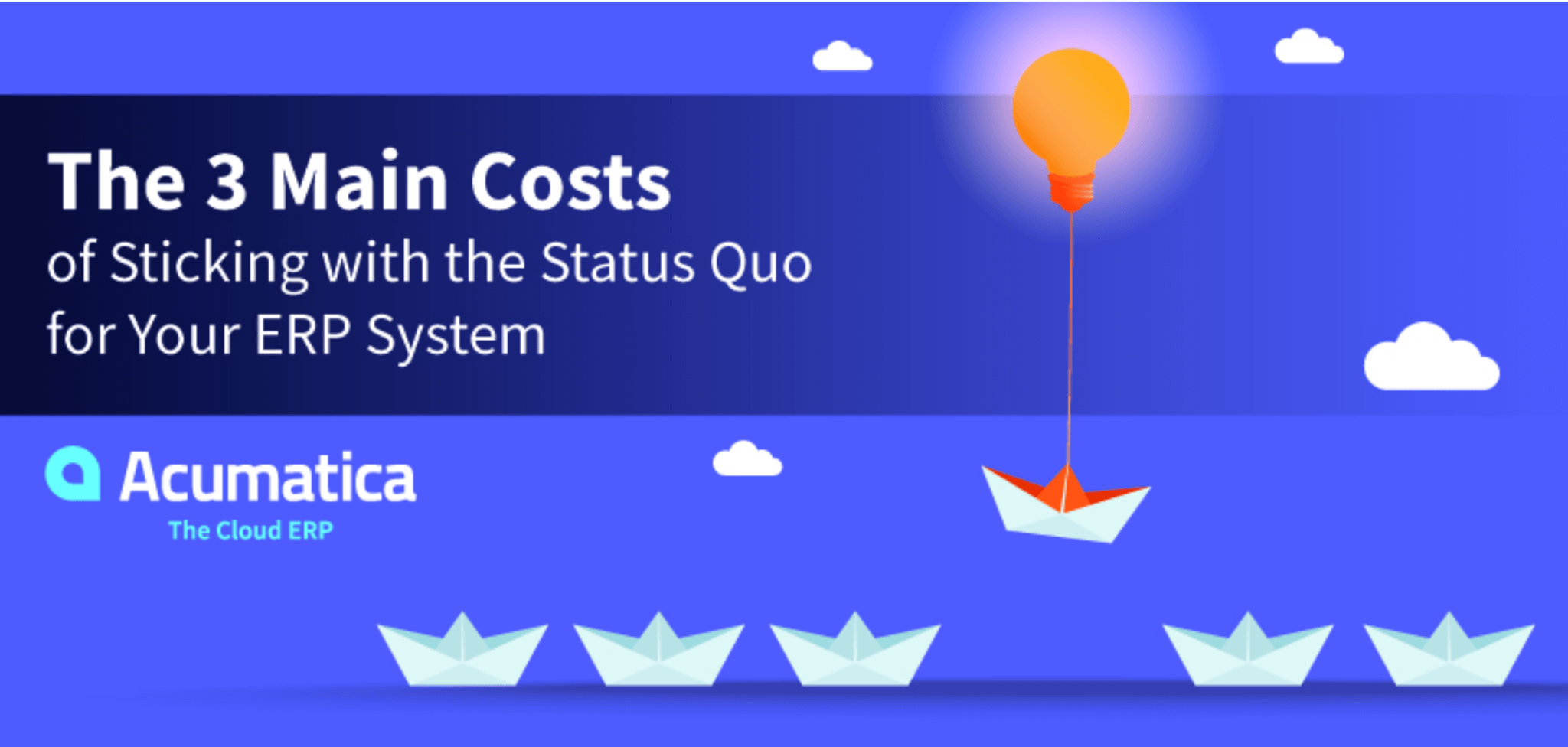By Ray Rebello – Director of Product Marketing at Acumatca
Your legacy ERP system may be due for an upgrade if the total cost of ownership outweighs your return on investment. A modern ERP system eliminates the three major costs of sticking with the status quo.
Over the years, you’ve invested a great deal in your ERP system. From the software itself to the hardware to run it, it was a costly purchase. And considering the immeasurable time and energy you’ve put into maintenance, updates, and workarounds—well, wouldn’t it be a shame to give up on it?
Your commitment to keeping your legacy system running is based on the best intentions, and truthfully, there’s always a good reason to “stick with it” for another year or two. Yet a cursory cost/benefit analysis will reveal that continuing to work with what you’ve got—for even another year or two—isn’t necessarily worthwhile: it’s costing you, especially when you consider what you have to gain from a modern solution.
Modern cloud ERP system removes legacy system costs
Let’s take a closer look at how you can eliminate the most prevalent “status quo” ERP system costs with a cloud ERP system.
1. Data silo costs
As your business has grown and become more complex, you’ve amassed more data—and it likely lives across several data sources. Your existing ERP system may not have been built to accommodate the volume of data you’re now generating and certainly not the disparate formats. It takes a great deal of (costly) custom programming and (costly) manual processing to ensure this data “syncs up” where and when it needs to and making sense of the data—from a time-sensitive decision-making standpoint—isn’t always possible.
Rebooting your approach to data management and business analytics by moving it into a cloud-based ERP system is, in most cases, the easiest and most cost-efficient solution. When you replace data silos with a unified system built from the ground-up to collect, store, and make sense of data coming from various sources inside (and outside) of its platform, all of your critical business insights are available—and accessible—to the people who need them most. The result: operational efficiencies that impact the bottom line and intelligence that impacts the top line.
2. IT Costs
Aside from the fact that it takes a harried IT team to maintain, running vital business systems on outdated (or let’s face it, even obsolete) software and hardware is risky. It might “work” to get your employees through the workday, which is often what justifies sticking with the status quo. But when new integrations are needed—let’s say your marketing department needs a better way to manage unstructured data coming from digital channels—either new code has to be written or valuable marketing staff spend their time trying to manage it in spreadsheets. Neither approach is a prudent, or particularly reliable, long-term solution.
Installing a cloud ERP system is a more economical and dependable path to IT freedom. The software is hosted in an inherently more affordable cloud environment and can be run on any internet-connected computers and devices. That means it’s easy to get up-and-running, with no need to purchase new hardware to support it. And what’s more, IT-related implementation, maintenance, and support costs are largely eliminated because cloud ERP vendors manage the nuts and bolts on their end.
3. Growing pains/Functionality costs
Business needs change over time, whether prompted by organizational growth or the passage of time and evolution of technology. It’s inevitable that your legacy ERP system will, at some point or another, show its limitations, and you’ll begin to invest heavily in adjunct, standalone systems that don’t elegantly integrate with your existing data. Or, employees will devise manual workarounds to make due with what they’ve got, which can lead to costs associated with inefficiencies, human error, or missed opportunities. Again, this approach might “get the job done,” but none of these activities are scalable or conducive to moving the business forward.
A highly adaptable cloud-based ERP system, on the other hand, is engineered for relatively simple and affordable functionality expansion. You can start with implementing its core functionalities and go on to extend to other solutions inside or outside of its platform. And since the solution automates your processes from the get-go, while collecting data from various sources in real-time and processing it for on-demand decision-making, your business operations—from the back office to the C-suite—move faster.
What’s next in your ERP system cost evaluation?
All things considered, while you may indeed spend budget dollars, time, and energy to implement a new, cloud-based ERP solution, you’ll end up with something that costs less to run, maintain, and meet the changing needs and preferences of your business users, the type of return on investment you want. Invest the time up-front to determine what you need and how to best transition your organization to a cloud computing environment.






Leave A Comment
You must be logged in to post a comment.